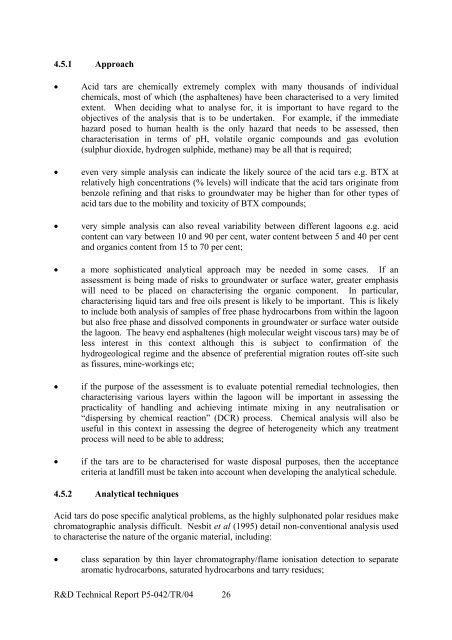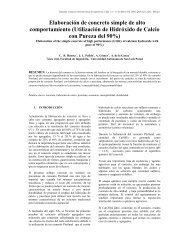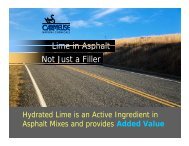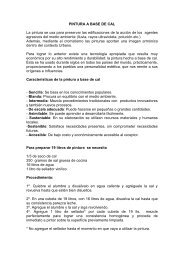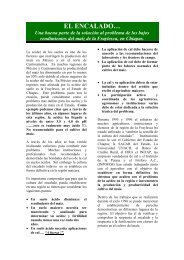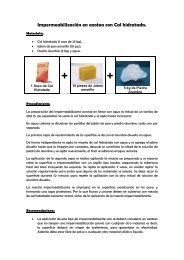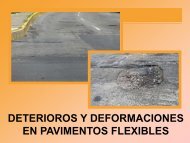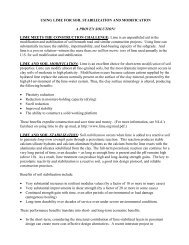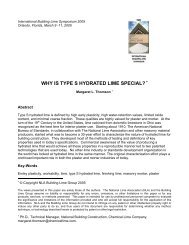Land Contamination: Technical Guidance on Special Sites: Acid Tar ...
Land Contamination: Technical Guidance on Special Sites: Acid Tar ...
Land Contamination: Technical Guidance on Special Sites: Acid Tar ...
You also want an ePaper? Increase the reach of your titles
YUMPU automatically turns print PDFs into web optimized ePapers that Google loves.
4.5.1 Approach• <strong>Acid</strong> tars are chemically extremely complex with many thousands of individualchemicals, most of which (the asphaltenes) have been characterised to a very limitedextent. When deciding what to analyse for, it is important to have regard to theobjectives of the analysis that is to be undertaken. For example, if the immediatehazard posed to human health is the <strong>on</strong>ly hazard that needs to be assessed, thencharacterisati<strong>on</strong> in terms of pH, volatile organic compounds and gas evoluti<strong>on</strong>(sulphur dioxide, hydrogen sulphide, methane) may be all that is required;• even very simple analysis can indicate the likely source of the acid tars e.g. BTX atrelatively high c<strong>on</strong>centrati<strong>on</strong>s (% levels) will indicate that the acid tars originate frombenzole refining and that risks to groundwater may be higher than for other types ofacid tars due to the mobility and toxicity of BTX compounds;• very simple analysis can also reveal variability between different lago<strong>on</strong>s e.g. acidc<strong>on</strong>tent can vary between 10 and 90 per cent, water c<strong>on</strong>tent between 5 and 40 per centand organics c<strong>on</strong>tent from 15 to 70 per cent;• a more sophisticated analytical approach may be needed in some cases. If anassessment is being made of risks to groundwater or surface water, greater emphasiswill need to be placed <strong>on</strong> characterising the organic comp<strong>on</strong>ent. In particular,characterising liquid tars and free oils present is likely to be important. This is likelyto include both analysis of samples of free phase hydrocarb<strong>on</strong>s from within the lago<strong>on</strong>but also free phase and dissolved comp<strong>on</strong>ents in groundwater or surface water outsidethe lago<strong>on</strong>. The heavy end asphaltenes (high molecular weight viscous tars) may be ofless interest in this c<strong>on</strong>text although this is subject to c<strong>on</strong>firmati<strong>on</strong> of thehydrogeological regime and the absence of preferential migrati<strong>on</strong> routes off-site suchas fissures, mine-workings etc;• if the purpose of the assessment is to evaluate potential remedial technologies, thencharacterising various layers within the lago<strong>on</strong> will be important in assessing thepracticality of handling and achieving intimate mixing in any neutralisati<strong>on</strong> or“dispersing by chemical reacti<strong>on</strong>” (DCR) process. Chemical analysis will also beuseful in this c<strong>on</strong>text in assessing the degree of heterogeneity which any treatmentprocess will need to be able to address;• if the tars are to be characterised for waste disposal purposes, then the acceptancecriteria at landfill must be taken into account when developing the analytical schedule.4.5.2 Analytical techniques<strong>Acid</strong> tars do pose specific analytical problems, as the highly sulph<strong>on</strong>ated polar residues makechromatographic analysis difficult. Nesbit et al (1995) detail n<strong>on</strong>-c<strong>on</strong>venti<strong>on</strong>al analysis usedto characterise the nature of the organic material, including:• class separati<strong>on</strong> by thin layer chromatography/flame i<strong>on</strong>isati<strong>on</strong> detecti<strong>on</strong> to separatearomatic hydrocarb<strong>on</strong>s, saturated hydrocarb<strong>on</strong>s and tarry residues;R&D <str<strong>on</strong>g>Technical</str<strong>on</strong>g> Report P5-042/TR/04 26


